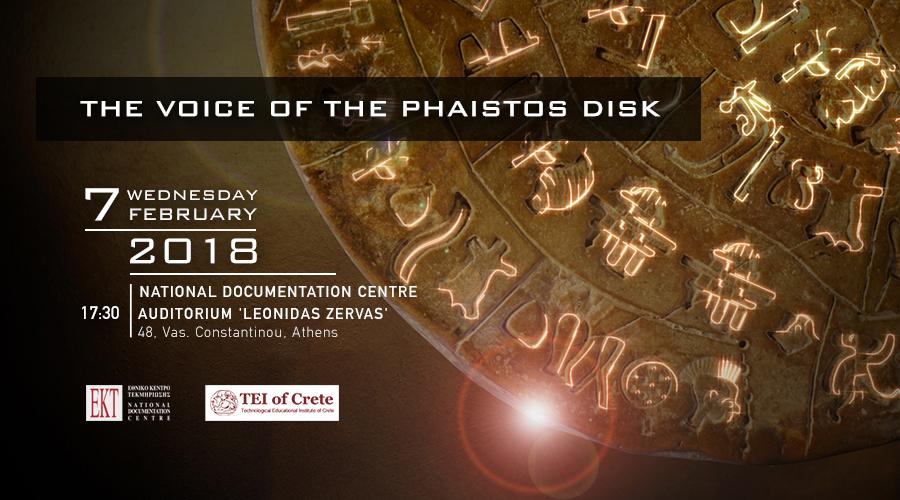
The National Documentation Centre and the Technological Educational Institute (TEI) Crete are holding an event on Wednesday 7 February 2018 (17.30) at the National Hellenic Research Foundation which will ‘reveal’ the secrets of the Disc of Phaistos based on the results of recent scientific research.
Dr. Gareth Owens, an expert on Minoan script, has dedicated 10 years of research to the disc. Working with Oxford Professor John Coleman, they are now able to ‘read’ 99% of the inscriptions. As a result of this research, Dr. Owens can now provide us with a documented, detailed and reliable interpretation to ‘reveal’ the secrets of the Disc of Phaistos. With respect to history and aware of the weight of the undertaking, he takes the research into interpretation of the disc a step further, talking about its essence and giving us what might be the ‘key’ to entering the sanctuary of the Minoan world.
The Disc is one of the most controversial inscriptions in the history of mankind. Much has been written about it, but there is still much more to be learnt before its mystery can be fully understood.
It was discovered in 1908 during the Italian excavations at Phaistos and is dated circa 1,700B.C. Today it is being exhibited at the Archaeological Museum in Hrakleion. Chronologically, it belongs to the period of Minoan Writing, but differs in many ways from it. The writing on the disc was inscribed in the clay using different stamps and is believed to be the oldest global form, about 2,500 years before the first samples of printed materials.
The Disc of Phaistos, with a diameter of roughly 16 cms, is inscribed on both sides with a total of 242 tokens, divided into 61 groups. There are 45 distinct signs on the disc, more than necessary for an alphabet but fewer than necessary for a true ideographic script. Whatever the case, the language of the disc, which is the best known example of ‘Minoan syllabary writing’, is still impenetrable.
Dr Gareth Owens has received a number of awards including the Ventris Award from the Architectural School of London and the Institute of Classical Studies, University College London, where he was a lecturer in Linear B (1991-1992), succeeding Professor James Hooker. He is currently Co-ordinator for the Erasmus+ programme and Assistant Head of the International Relations Office TEI Crete. In addition, he has been appointed as 'ambassador' for Erasmus+ for higher education by the European Union for the period 2014-2020.







